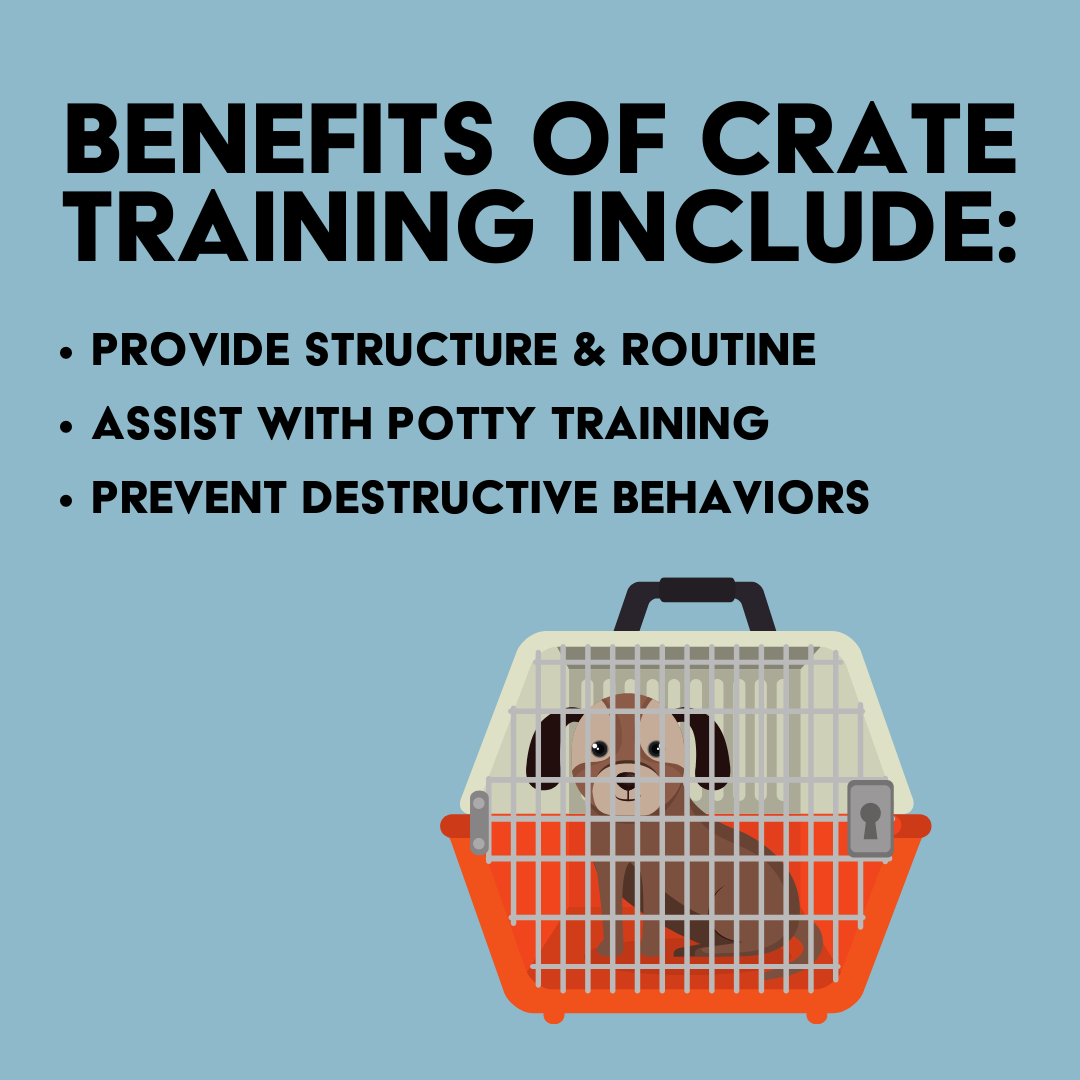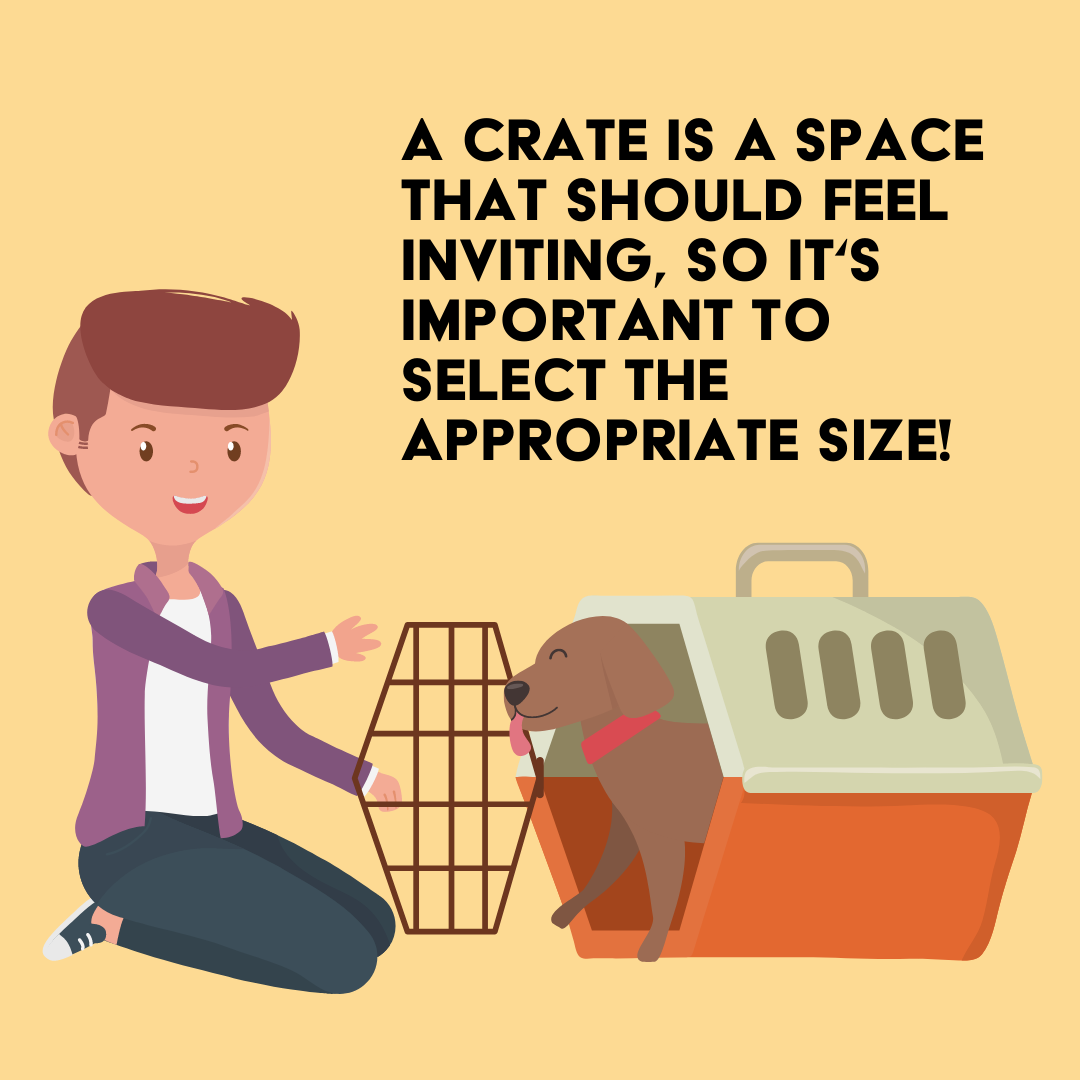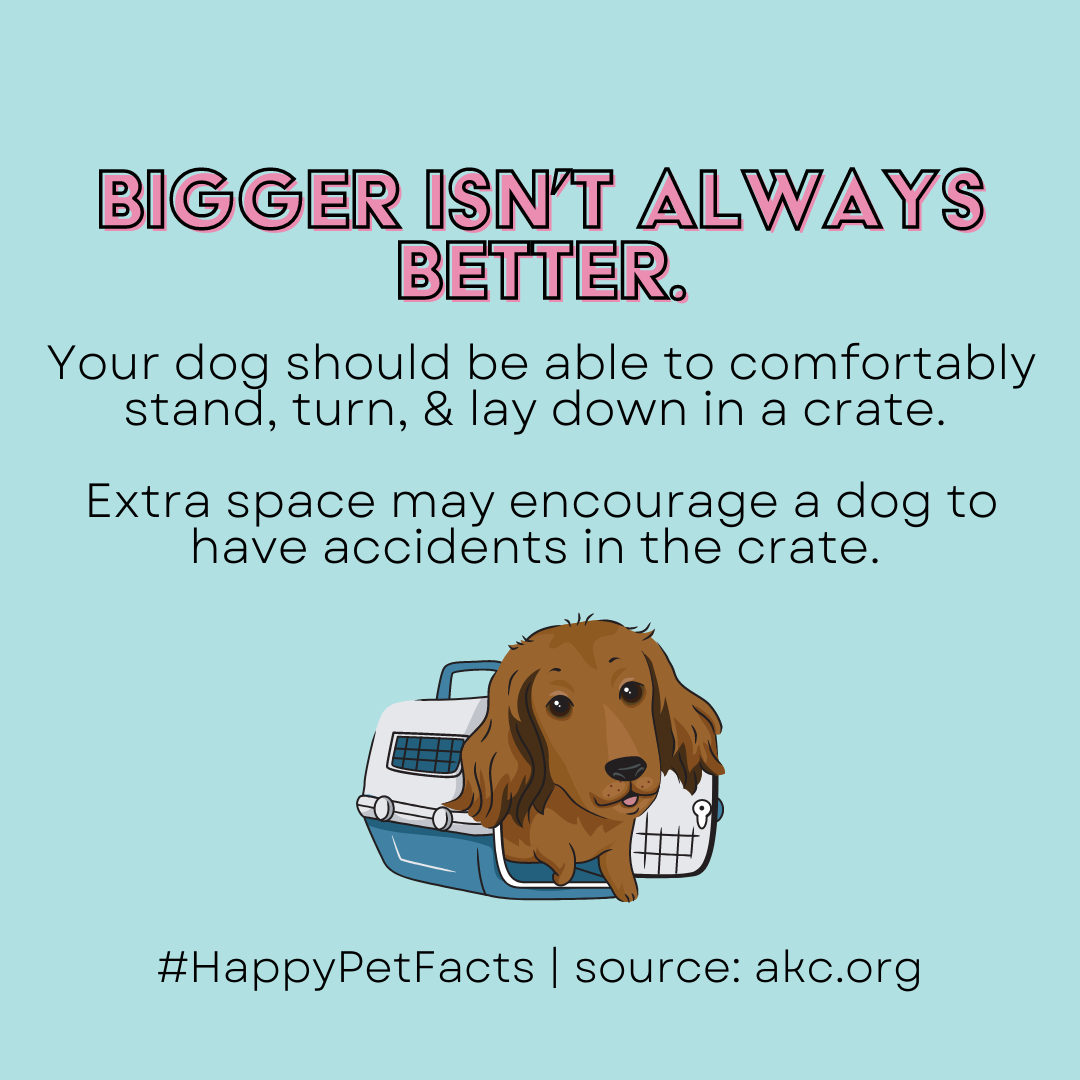|
Dog owners may wonder, "Is crate training really necessary? Is it worth my time and energy? Will my pup be sad?" Here's our stance: CRATE TRAINING SAVES LIVES & REDUCES THE HOMELESS PET POPULATION! According to Best Friends Animal Society, 4.6 million dogs & cats entered US shelters in 2021. Pet behaviors and finances were 2 of the top reasons owners surrendered their pets (BestFriends.org). When shelters reach capacity, staff has to make the difficult decision to euthanize animals in their care. There simply isn't space or resources for the number of homeless animals in our communities. So here's the bottom line: Keeping animals in their homes results in fewer deaths by euthanasia and crates are key to helping animals succeed in their families' homes. 6 REASONS TO CRATE TRAIN YOUR DOG 1. Crates keep injured or recovering pets from harm. Major surgeries, minor procedures, or pulled muscles all require rest for a healthy recovery. Teaching your pet that a crate is their safe space will help them feel comfortable resting inside one when it is absolutely imperative to their health. Owners who don't utilize a crate may see repeat injuries, torn sutures, and other painful, costly health complications. 2. Crates prevent destructive behaviors like chewing. It is normal for pets to become unsure or anxious in their human's absence. Without a crate, many pets turn to chewing or scratching at baseboards, windowsills, and more. These home repairs are expensive, and even worse, they can result in bowel obstructions. If a pet swallows foreign objects that obstruct their bowels, the result is often an expensive surgery or even death. The average cost of surgery to save a dog from death following an obstruction can range from $800 to more than $7,000, according to Care Credit. Purchase a crate instead and enjoy peace of mind when you're away from home. 3. Crates prevent dog bites. It is natural for many dogs to guard or protect their food or treats. Prevent conflicts between dogs and protect curious children from harm by feeding meals and high-value treats inside of crates! (Note that some dogs also get possessive over dog toys. If you notice your pet guarding their toy, growling, or displaying stiff body language, you may advocate for them by donating the toys and finding other ways to play.) 4. Crates often prevent excessive barking. Many dogs bark or whine when first growing accustomed to their crate, but with time and practice, most will grow to love the cozy confines of their crate. (Try white noise or classical music too!) Tucked away from a noisy gathering of strangers, or from a window with a view of a busy street, a dog is much less likely to stress out and bark. This is especially important for apartment-dwelling dog owners! 5. Crates help potty train! Dogs learning to potty outside rely on the confines of a crate to learn their schedule and understand what their humans expect of them. Most dogs avoid urinating or defecating in their crate (make sure it's cozy - crates that are too big encourage going potty on the other end of the space.) A young pup's schedule may look like this: eat in the crate, go out to potty, enjoy some play time, and then return to the crate for rest. 6. Dogs sleep. A lot. Dogs often sleep 12+ per day, and many spend just a few hours being active, per the American Kennel Club. Seniors, young pups, and large breed dogs of all ages typically sleep even MORE often than average. So, don't let a nagging sense of guilt stop you from utilizing a crate. Snoozing in a crate inside of a warm, loving home, is a wonderful alternative to the cold, loud shelter, or the unpredictable environment of the street. What are your thoughts on crate training?
Have questions about how to begin? Drop us a comment below! Would you like another blog post dedicated to crate training pointers? Let us know :D
0 Comments
Leave a Reply. |
Archives
July 2023
Categories |
Texas Good Deeds Project
© Texas Good Deeds Project. EIN 87-2226038. All rights reserved.
Thank you for supporting our 100% volunteer run organization, where every dollar goes toward savings lives!
Privacy Policy
Thank you for supporting our 100% volunteer run organization, where every dollar goes toward savings lives!
Privacy Policy




 RSS Feed
RSS Feed
